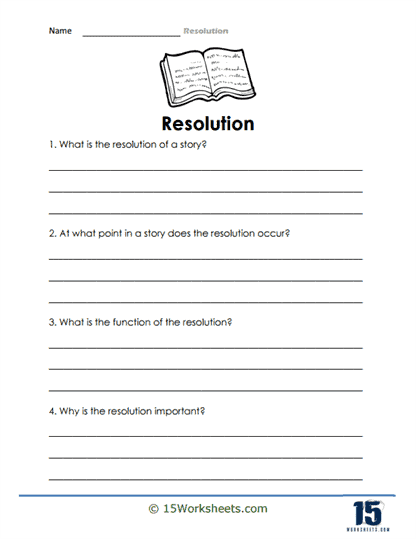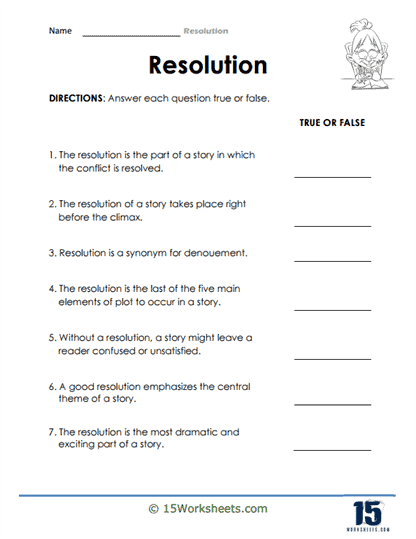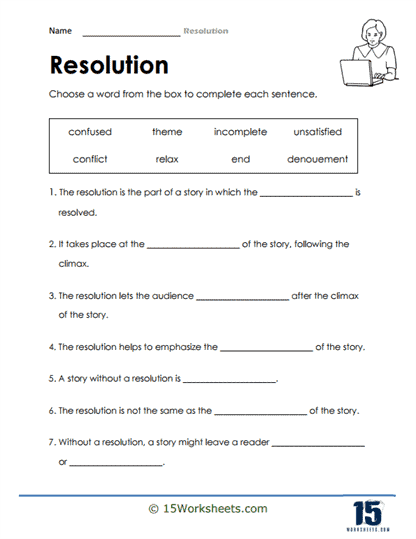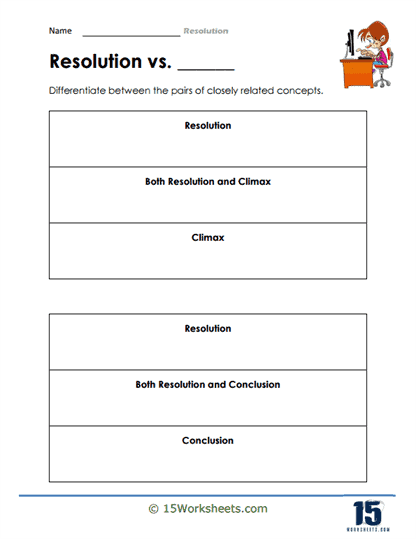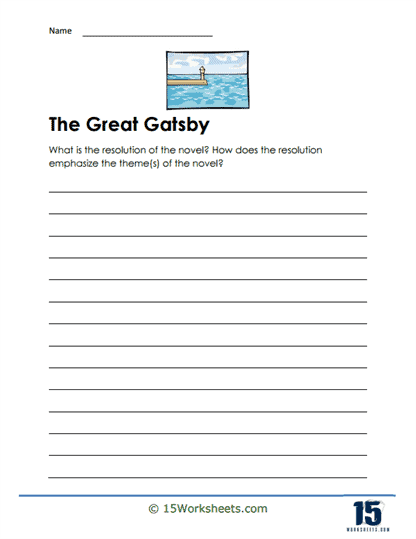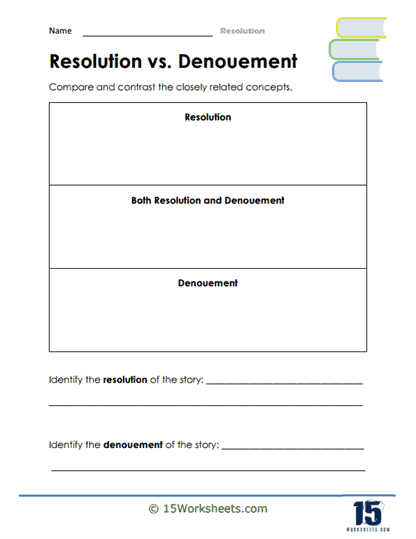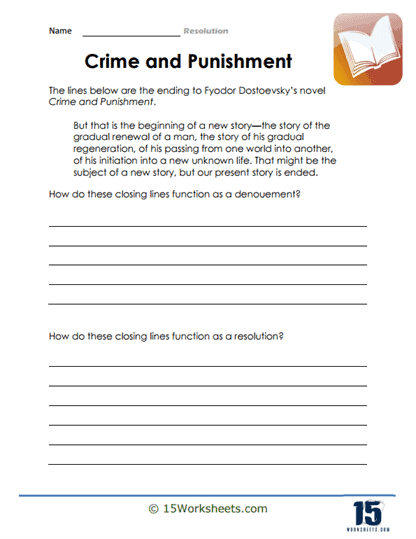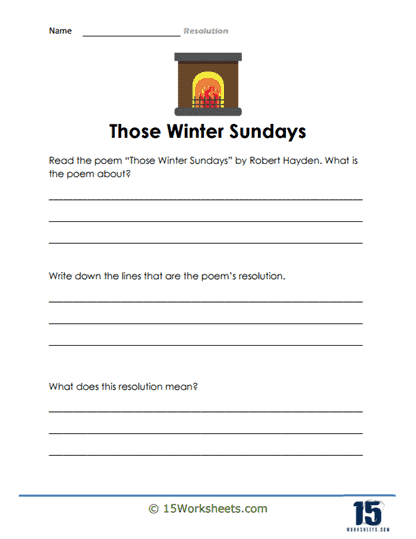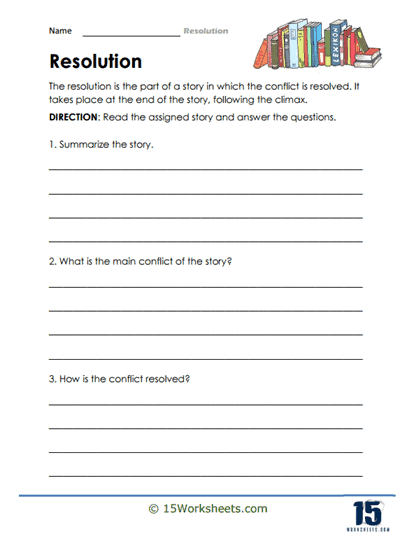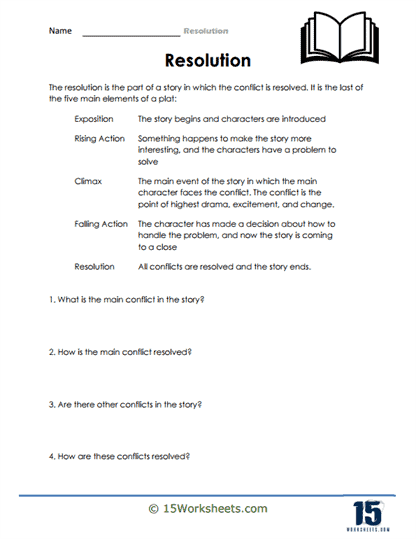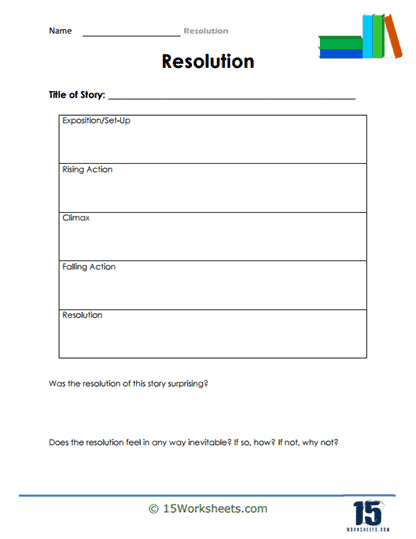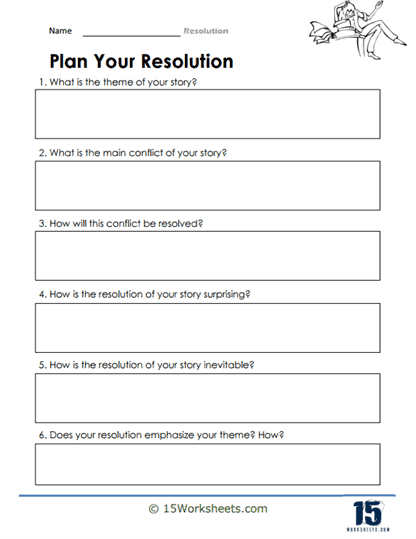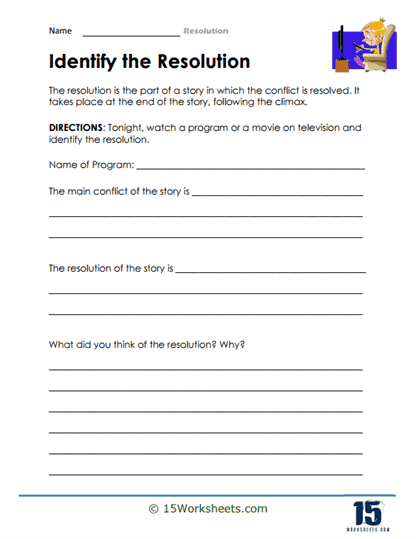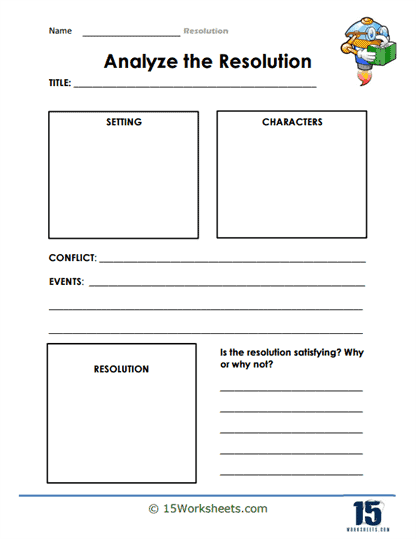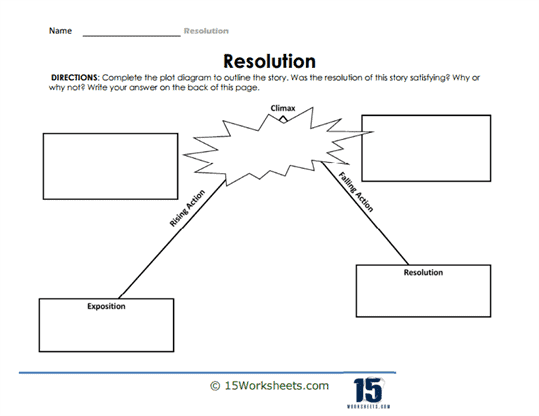Resolution Worksheets
All About These 15 Worksheets
A story is one of the most commonly read and popular forms of literature found across the globe in hundreds of different languages. Regardless of the language that the story is written in, nearly all stories are made up of similar components and elements.
The five most commonly found components that help build an interesting and coherent story include the exposition, which contains the characters, the setting, and the plot. Following this comes the rising action, during which the beginning of a conflict can be seen. After the conflict is introduced, the next part is called the story’s climax, which eventually turns into final action as the conflict is solved and begins to simmer down. Lastly comes the resolution that works as a bow, securing the story together.
The resolution or the denouement is basically the ending of a story. It comes right after the story’s climax or main conflict simmers down. Without a well-written and properly constructed resolution, the story would fail to offer its readers any closure, would seem incomplete, and hence would fail to gain any recognition or positive feedback in the literary world.
Continue reading below to learn about the three main elements that are extremely important to writing a coherent and satisfying resolution. Moreover, this blog also contains some popular examples of well-written resolutions found in English literature.
What Are the Three Main Elements of a Well Written Resolution?
– The main conflict or climax of the story is resolved. During this, the main conflict revolving around the story’s antagonist and the protagonist is finally resolved and taken care of.
– The individual characters get their individual endings and closures. Usually, in a story, several characters face different situations and problems. A good resolution would include closure and a proper ending to each of the main character’s personal conflicts and struggles.
– Lastly, a satisfying resolution will answer any mysteries or questions in the story that have not yet been addressed to clear all ambiguities.
Popular Examples of Resolutions Found in English Literature
– In the popular play Romeo and Juliet by William Shakespeare, the resolution included how the two families realized that their hatred led to the death of the two children. The well-written resolution managed to end the feud between the two main families and allowed the conflict to finally come to an end.
– In the globally popular series Harry Potter by J.K Rowling, the main antagonist Lord Voldemort finally is defeated and the main protagonists carry on to live their lives in harmony and peace.
– In the story series the Hunger Games, written by Susanne Collins, President Snow, who was the main antagonist, finally died, and the protagonists could return to their normal lives.
How to End a Narrative with a Resolution Properly
A narrative with a resolution is a story with a beginning, middle, and end. The resolution is the part of the story where the problem is solved, and the story comes to an end. A good resolution ties up all the loose ends and leaves the reader feeling satisfied. It is important to remember that a resolution does not have to be happy or perfect, but it should bring a sense of closure to the story. Without a resolution, a story may feel unfinished or open-ended.
Ending a narrative with a resolution can be difficult. Here are a few tips on how to end a narrative with a resolution properly.
1. Introduce the Problem at the Beginning of the Story
No one likes feeling stuck. Whether in our personal or professional lives, facing a problem can be frustrating. This is why it’s important to introduce readers to the problem at the beginning when writing a narrative with a resolution. Doing so allows them to empathize with the characters and understand their motivations. We also create a sense of suspense, urging the reader to find out how the story will end giving them a reason to keep turning the page.
2. Describe How the Character Tried to Resolve the Problem but Failed
Many readers will immediately try to find a resolution when faced with a problem. You should consider adding suspense and playing a little with the reader’s emotions by describing how the character tried to resolve the problem but failed.
For a moment, it will make the readers disappointed and frustrated, but it will add the needed spice to the story.
3. Show How the Character Finally Resolves the Problem
In every great story, the protagonist must undergo some kind of growth or change. In many cases, this comes about as a result of the character making mistakes and then learning from them.
For example, in the classic novel The Adventures of Huckleberry Finn, the title character starts off the story by running away from home. He then has a series of adventures, during which he makes several poor decisions. However, by the end of the story, he has learned from his mistakes and matured into a responsible young man. As a result, his journey has been rewarding for both him and the reader.
In order to create a satisfying narrative with a resolution, it is essential to show how the character has learned from his mistakes. This will not only make for a more believable story, but it will also provide readers with an inspiring example of personal growth. With this in mind, be sure to keep the lessons your characters learn in mind as you craft your next great story.
4. Recap What Happened as a Result of Resolving the Problem Properly
It’s always satisfying to see a problem resolved properly in a narrative. Not only does it provide closure for the characters involved, but it also gives the readers a sense of satisfaction. After all, they’ve invested time and energy in following the story, and it’s only fitting that they should see a proper resolution.
So what happens when a problem is resolved properly in a narrative? In short, everything works out for the best. The characters are able to overcome their challenges and find happiness, while the readers are left with a sense of satisfaction. It’s the perfect ending to a well-told story.

